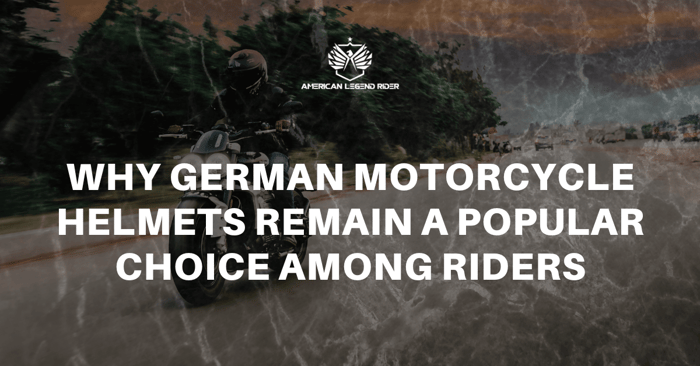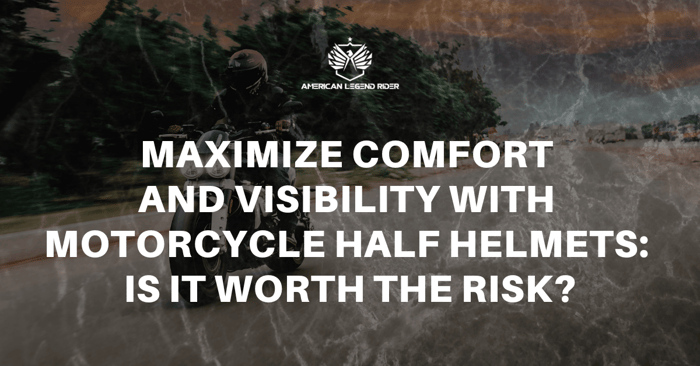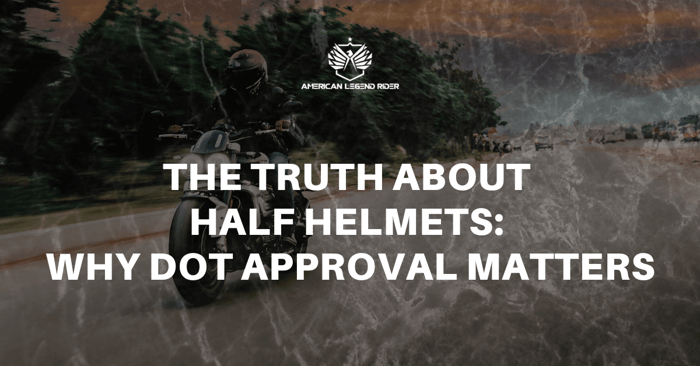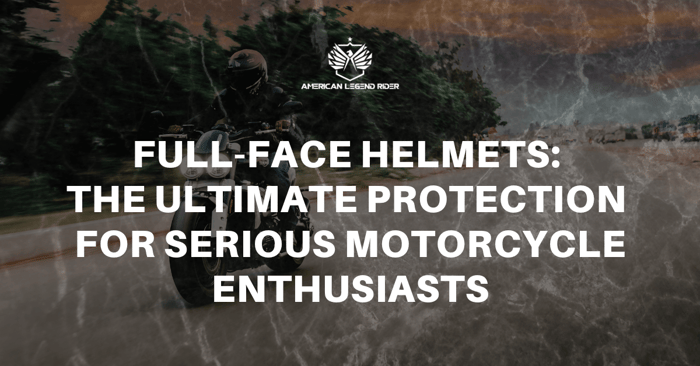Riders can choose from a wide range of patterns and designs when it comes to motorcycle helmets. The open-face helmet design is one of the most widely used styles. Open face helmets provide riders the freedom to feel the wind on their faces and the comfort of knowing that their top and face are still protected. We shall examine the characteristics, advantages, and disadvantages of open face helmets in this post.
In open face helmets, the face is typically left exposed while the top, back, and sides of the pinnacle are covered. Some open face helmets contain a little visor or other eye protection to shield the eyes from the sun, wind, or other elements. Because they offer better ventilation and make it easier to communicate verbally with other riders or pedestrians, many riders choose for open face helmets. They also tend to be more comfortable and lightweight than full-face helmets.
The increased visibility that open face helmets provide is one of its key advantages. Riders can see their surroundings more clearly and may be able to see more of the road ahead without chin defence. This can be very useful while driving through cities or when there are plenty of people. On hot days, the open design of the helmets may assist keep riders cool and comfortable since it allows for more ventilation. A further benefit of open face helmets is that they tend to be less obstructive, making it easier to communicate with other cyclists or pedestrians.
While open face helmets have some benefits, they also have some disadvantages. Without a chin protection, the rider's face is more exposed to the elements and may be more susceptible in the event of a mishap.
Open face helmets also provide less protection for the face and eyes, which could be an issue for some riders. It's also important to remember that not all riding styles, like as off-road or racing, where full-face helmets are frequently required, are suitable for open-faced helmets.
There are certain important factors to keep in mind while choosing an open face helmet. The helmet should, first and foremost, fit comfortably and be easy to put on. To find the proper size and shape for your head, you should degree your head and try on several different types of helmets. You must also consider the type of riding you will be performing when choosing a helmet, making sure that it provides adequate protection for your needs.
Riders that wear open face helmets benefit from things like better visibility, better airflow, and more comfort. However, they also have some shortcomings and might not be suitable for all uses.
It's important to think about your needs when choosing an open face helmet and to find one that fits comfortably and offers adequate protection. You may enjoy the freedom and luxury of utilising while maintaining your safety on the road if you have the right helmet.
Although riding a motorbike is an amazing experience, it is also dangerous. Due to their lack of the protection provided by a car or truck, motorcyclists are more likely to cause accidents than other drivers. The most important precaution a rider can take to protect himself in the case of an accident is to wear a helmet.
In this article, let's discover the importance of wearing a helmet while using a motorbike.
Protection from Head Injuries
To protect the head from danger is the most important reason to wear a helmet when riding a motorbike. The most susceptible portion of the body in a collision is the head, therefore wearing a helmet can help you avoid fatalities or painful brain injuries. In fact, studies have shown that wearing a helmet can reduce the likelihood of brain injuries by as much as 85%.
Legal Requirements
In many nations, it is illegal to ride a bike without a helmet on. Fines, licence suspensions, and even jail time may result from breaking certain laws. It is crucial for riders to check their local laws and ordinances to make sure they are in compliance.
Increased Visibility
A rider's visibility on the road can be increased by wearing a helmet. Several helmets feature reflective materials or bright colours that could increase the rider's visibility to other drivers, especially in low-light conditions. By improving other drivers' ability to see the rider, this can help prevent accidents.
Protection from the Elements
Helmets can protect wearers from the weather, including rain, wind, and flying debris. This can help drivers stay focused and at ease on the road, even under challenging circumstances. In addition to increasing safety and comfort, some helmets have visors or shields to shield the eyes from glare or debris.
Setting an Example
Last but not least, wearing a helmet sets a terrific example for both riders and non-riders. By using a helmet, riders convey that they value safety and put their own well-being first. This can encourage people to adopt safe practises and lessen the negative connotations associated with wearing helmets.
Early Helmets
In the early days of motorcycling, riders failed to put on helmets. In truth, it wasn't till the 1910s that the first helmets have been added. These early helmets had been made of leather and have been intended extra for safety from the factors than from impacts. They had been often referred to as "pudding basin" helmets, as they resembled upside-down bowls.
Development of Modern Helmets
The Fifties saw the improvement of the cutting-edge bike helmet. The first helmets with tough shells had been delivered, which supplied plenty higher protection than their leather predecessors. These helmets had been additionally a whole lot lighter and greater cushty to put on. In the Sixties, full-face helmets have been added, which supplied even more protection by way of overlaying the chin and face.
Regulations
In the Nineteen Seventies, governments round the sector started to introduce policies requiring the usage of motorcycle helmets. This became in reaction to the developing quantity of fatalities and accidents from motorcycle injuries. In the USA, the federal government added a law requiring all states to put in force helmet legal guidelines for you to acquire highway funding.
Improvements in Safety
Over the years, motorbike helmets have continued to adapt and improve in terms of safety. New materials were developed, such as carbon fiber and Kevlar, which offer better protection from influences. Helmets have also been designed to be greater aerodynamic and to provide higher air flow.
Today, bike helmets are to be had in a extensive range of patterns and designs, from complete-face helmets to open face and modular helmets. They also are available in a range of expenses, from cheap access-level helmets to excessive-cease racing helmets.
The motorcycle helmet has come an extended manner since the early days of motorcycling. What turned into once an optional piece of gadget is now a requirement for riders in many elements of the world. Through the improvement of contemporary helmets, the advent of regulations, and improvements in safety, the bike helmet has emerge as an vital piece of safety system for riders.
Motorcycle helmets come in various kinds, every with its unique functions and advantages. In this article, we are able to discover the unique sorts of motorbike helmets available in the market:
Full-face helmet
As the name shows, a full-face helmet covers the whole face, including the chin and jaw. It offers the maximum complete safety among all forms of motorbike helmets. It has a hard outer shell made of long lasting materials like polycarbonate or fiberglass, and a padded internal lining for comfort and impact absorption. Full-face helmets generally feature a face guard that protects the rider's face from wind, dirt, particles, and insects, even as offering appropriate visibility. Some superior full-face helmets may additionally have extra features together with ventilation systems, Bluetooth communication, and incorporated solar visors.
Half helmet
Also called a "shorty" or "skull cap" helmet, a 1/2 helmet covers most effective the pinnacle of the head and leaves the face, ears, and neck exposed. It provides the least amount of protection amongst all kinds of helmets and is famous among riders who opt for a minimalistic and open experience. Half helmets are light-weight and provide top ventilation, but they do no longer offer adequate protection for the face, which makes them much less safe compared to other helmet kinds.
Modular helmet
A modular helmet, additionally known as a flip-up or convertible helmet, combines capabilities of both complete-face and open-face helmets. It has a hinged chin bar that may be flipped up, allowing the rider to have an open-face helmet enjoy when wished and full-face helmet protection while the chin bar is down. Modular helmets are flexible and convenient, as riders can without difficulty turn up the chin bar to talk with others, take a drink, or get some clean air with out putting off the whole helmet. However, they may no longer offer the identical stage of safety as a complete-face helmet due to the hinge mechanism.
Off-street helmet
Off-street helmets, also referred to as dirt bikes or motocross helmets, are designed for off-road and dust riding. They have a unique shape with an prolonged chin bar and a huge visor for safety against flying debris, rocks, and branches. Off-avenue helmets generally have a greater competitive appearance and offer exquisite ventilation for the rider's comfort for the duration of extreme off-road activities. They are lightweight and durable, with a difficult outer shell made of materials like polycarbonate or carbon fiber. Off-street helmets do now not generally have face shields, and riders typically put on goggles for eye safety.
Open-face helmet
An open-face helmet, also referred to as a 3/4 helmet, covers the top, returned, and sides of the head however leaves the face and chin uncovered. It gives more coverage than a half of helmet but much less than a full-face helmet. Open-face helmets offer a traditional and retro appearance and are popular among riders who decide on a experience of freedom and visibility. However, they do not provide good enough safety for the face and chin, making them much less secure in comparison to full-face helmets.
Dual-sport helmet
Dual-game helmets, additionally called journey or crossover helmets, are designed for riders who engage in each on-avenue and off-road riding. They have a hybrid design that mixes functions of complete-face and off-road helmets, with a massive visor and prolonged chin bar for off-street protection, and a face defend for on-street driving. Dual-recreation helmets commonly have suitable ventilation and are designed to be versatile and cushty for each forms of riding.
In end, selecting the right sort of motorcycle helmet is important for rider safety. Full-face helmets offer the very best stage of safety, while half helmets offer the least coverage. Modular helmets provide versatility, off-street helmets
There are numerous kinds of helmets available, but one of the most famous options is the open-face helmet. In this article, we're going to outline what an open-face helmet is and spotlight its key features.
An open-face helmet, additionally known as a three/4 helmet, is a form of bike helmet that covers the top, facets, and back of the pinnacle, leaving the face exposed. It normally has a chinstrap to keep the helmet securely in vicinity, and it is able to characteristic a visor or defend to shield the rider's eyes from the solar and wind.
Features
Coverage: As mentioned, an open-face helmet covers the top, facets, and again of the head, but it leaves the face open. This can provide a extra comfortable and much less restrictive experience than a complete-face helmet.
Ventilation: Open-face helmets frequently function extra air flow than full-face helmets. This may be specifically vital in hot climate or for the duration of long rides, as it could help maintain the rider cool and prevent overheating.
Visor or defend: While now not all open-face helmets function a visor or protect, many do. This can provide extra protection from the solar, wind, and particles, as well as beautify visibility in brilliant sunlight.
Chinstrap: A chinstrap is an critical feature of any helmet, as it facilitates keep the helmet securely in region within the occasion of an accident.
Weight: Open-face helmets tend to be lighter than full-face helmets, which could make them more cushty to put on for longer periods of time.
Style: Open-face helmets are available quite a few patterns and designs, permitting riders to pick out a helmet that fits their personality and style.
Overall, open-face helmets can be a tremendous alternative for riders who fee consolation, ventilation, and style. However, it's essential to notice that they do no longer provide the identical level of safety as full-face helmets, especially when it comes to facial injuries. Riders need to carefully keep in mind their wishes and alternatives when choosing a helmet and usually wear one while using for max safety.
Communication: Open-face helmets regularly permit for higher conversation with other riders, as the rider's face isn't completely included. This can be critical for group rides or while communicating with different riders on the street.
Ease of Use: Open-face helmets are normally simpler to put on and take off as compared to complete-face helmets, making them a handy option for brief rides or urban commuting.
Affordability: Open-face helmets are frequently less costly than complete-face helmets, which can cause them be an appealing choice for riders on a price range.
Legal necessities: In a few states or nations, open-face helmets may not meet the legal requirements for helmet use on motorcycles. Riders need to constantly take a look at the laws and policies in their location earlier than choosing a helmet.
It's essential to notice that while open-face helmets can offer many benefits, they may not be suitable for all riders or all riding conditions. Riders who often trip on highways or at high speeds can also need to choose a complete-face helmet for max safety, while riders who frequently trip in bloodless or wet situations can also decide upon a helmet with complete-face coverage for delivered protection from the factors.
While open-face helmets are a popular preference among motorcycle riders, there are some potential drawbacks to recollect. In this article, we'll talk about some of the cons of open-face helmets.
Reduced protection: The biggest disadvantage of open-face helmets is that they do now not offer the same stage of safety as complete-face helmets. The face and chin are left uncovered, which will increase the danger of facial injuries in the occasion of an coincidence. This is particularly regarding for riders who often ride at high speeds or on highways.
Debris and insects: Open-face helmets go away the rider's face uncovered to particles and bugs on the road, which may be distracting and doubtlessly dangerous. Flying objects together with rocks or other particles can cause injuries or distractions while bugs can purpose soreness or maybe minor accidents.
Weather protection: While open-face helmets offer ventilation, they do now not provide the identical level of protection from the elements as full-face helmets. This way that riders can also revel in soreness in cold or wet climate or may also need to put on extra equipment to live warm and dry.
Noise: Open-face helmets may not provide the same stage of noise discount as complete-face helmets, which may be a issue for riders who often journey on highways or in noisy urban regions. This can be in particular regarding for riders who fee listening to protection.
Limited communication: While open-face helmets do permit for better conversation with other riders, they'll not be as powerful at blocking off out external noise, that can make it tough to hear conversations or commands from different riders.
Style: While open-face helmets offer a huge range of style alternatives, some riders might also decide on the sleeker, greater streamlined appearance of a complete-face helmet. This is mostly a matter of personal choice.
In conclusion, while open-face helmets provide many advantages, they'll not be appropriate for all riders or all driving conditions. Riders who prioritize protection, weather safety, or noise discount can also need to choose a complete-face helmet instead. However, for riders who prioritize comfort, air flow, and communication, an open-face helmet may be a appropriate option. As usually, riders must cautiously don't forget their needs and possibilities when choosing a helmet and prioritize safety mainly else.
With such a lot of alternatives in the marketplace, it may be hard to recognise a way to pick out the right open-face helmet on your wishes. In this article, we can discuss the elements to do not forget whilst choosing an open-face helmet to ensure that you make the proper desire.
Safety Standards
The first and most critical issue to remember whilst selecting an open-face helmet is protection. Ensure that the helmet you pick out meets the safety standards set through your us of a. In the united states, the Department of Transportation (DOT) sets protection requirements for helmets, at the same time as in Europe, helmets must meet the ECE 22.05 popular. Additionally, helmets with Snell certification meet a higher protection preferred and offer more protection.
Fit and Comfort
When searching for an open-face helmet, it's critical to ensure a right suit. The helmet need to fit snugly but no longer be too tight, and it need to not pass round whilst you shake your head. A helmet that fits nicely will offer higher safety and be extra comfortable to wear.
Make certain to measure your head size earlier than buying a helmet and test the producer's length chart to ensure that you choose the right size. It's additionally critical to keep in mind the helmet's weight, as a heavy helmet can motive neck stress and fatigue for the duration of lengthy rides.
Ventilation
Ventilation is some other important issue to remember while deciding on an open-face helmet. A well-ventilated helmet will preserve you cool and comfortable during warm weather and save you fogging on the visor throughout cold weather. Look for a helmet with vents in the front, pinnacle, and again to make certain good enough airflow.
Visor
The visor is an crucial part of any open-face helmet. It protects your face and eyes from dust, wind, and particles at the same time as driving. When deciding on a helmet, don't forget the satisfaction of the visor. It ought to be scratch-resistant and offer clean visibility.
Some helmets include a tinted visor, which is beneficial for sunny days. However, make sure the tint is not too dark, as this will impair your visibility in low-light conditions.
Style and Design
While protection and comfort are the most essential factors when deciding on a helmet, style and design also play a position. An open-face helmet can replicate your personality and fashion, and there are various options to pick out from, ranging from traditional and unfashionable to trendy and glossy.
When deciding on a helmet, recollect the colour and design that quality fits your style. Some helmets even include images or art work, which may be a a laugh manner to specific your character.














